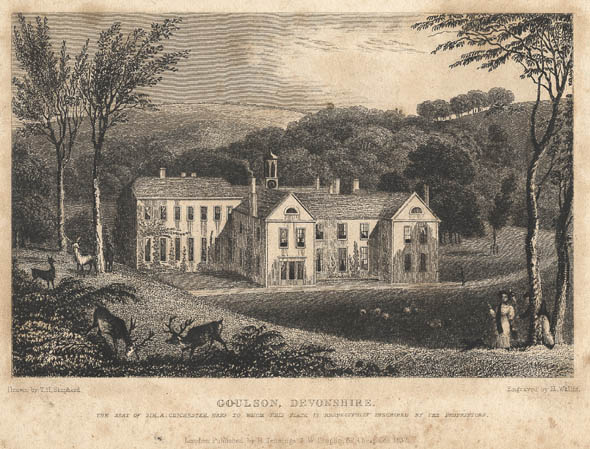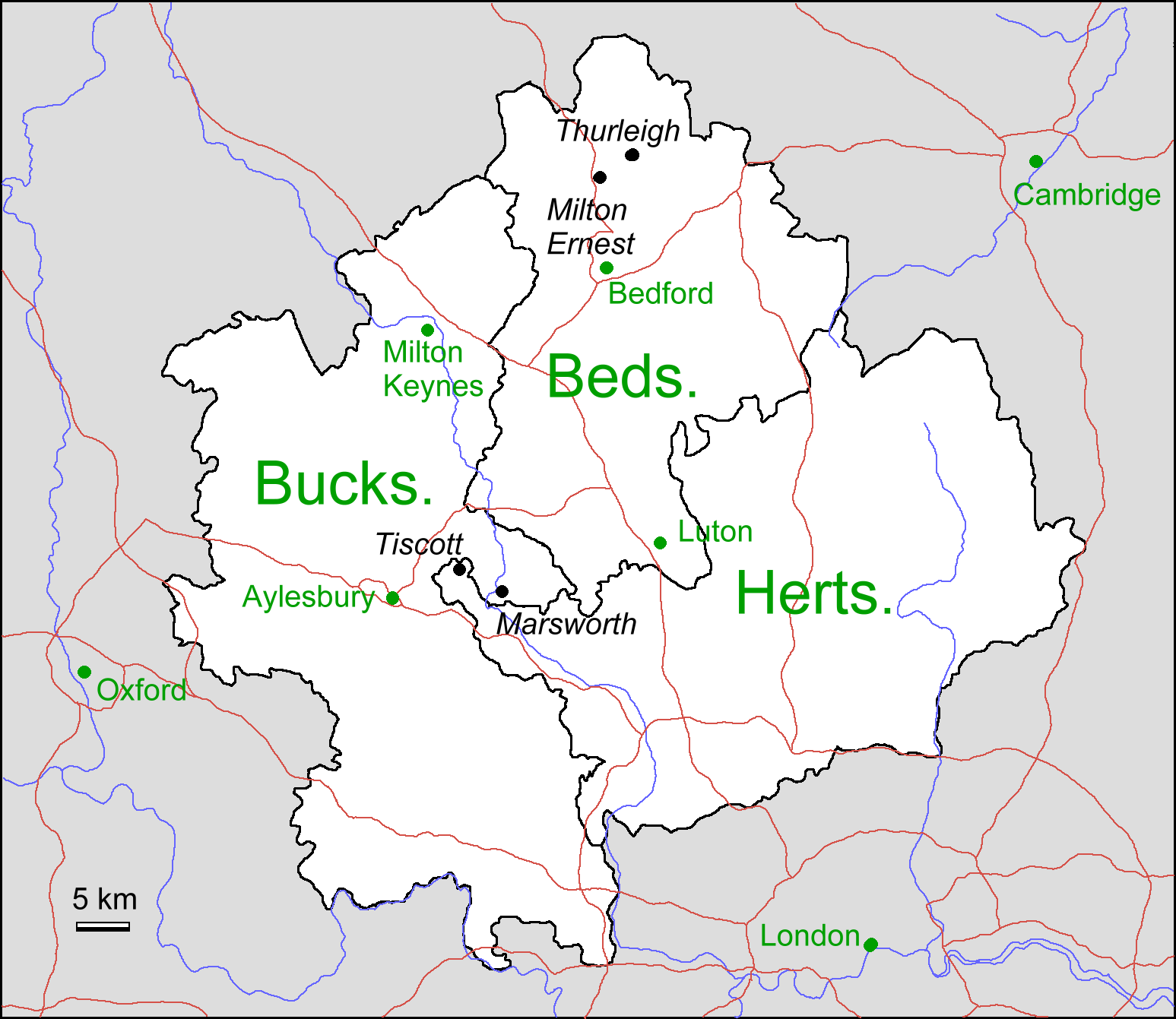|
Haldon House
Haldon House (pronounced: "Hol-don") on the eastern side of the Haldon Hills in the parishes of Dunchideock and Kenn, near Exeter in Devon, England, was a large Georgian country house largely demolished in the 1920s. The surviving north wing of the house, comprising the entrance front of the stable block, consists of two cuboid lodges linked by a screen pierced by a Triumphal Arch, with later additions, and serves today as the "Lord Haldon Hotel". The house was originally flanked by two such paired pavilions, as is evident from 19th century engravings. History According to Nikolaus Pevsner, the house was built in about 1735 by Sir George Chudleigh, 4th Baronet (died 1738), and was supposedly influenced by Buckingham House in London, built in about 1715. Chudleigh's ancestral seat was at nearby Ashton House, on the west side of Haldon Hill, the residence of his family since about 1320, and which he abandoned to build Haldon House on the east side of the hill. In 1798 Ashton H ... [...More Info...] [...Related Items...] OR: [Wikipedia] [Google] [Baidu] |
Youlston Park
Youlston Park also known as Youlston House is a privately-owned 17th-century mansion house situated at Shirwell, near Barnstaple, North Devon, England. It is a Grade I listed building. The parkland is Grade II listed in the National Register of Historic Parks and Gardens. The game larder and stables are individually listed Grade II. The pair of entrance lodges are listed Grade II*. The mediaeval origins of the house including a detached hall and a kitchen block were incorporated into the new house built in the late 17th century by Sir Arthur Chichester, 3rd Baronet, Member of Parliament for Barnstaple, who died in 1718. (He was a younger son of the first of the Chichester baronets There have been three baronetcies created for persons with the surname Chichester, one in the Baronetage of England and two in the Baronetage of the United Kingdom. Only the 1641 creation is extant. Chichester baronets, of Raleigh (1641) The ....) The south-facing two-storey entrance front has se ... [...More Info...] [...Related Items...] OR: [Wikipedia] [Google] [Baidu] |
Oxton, Kenton
Oxton in the parish of Kenton in South Devon is a historic estate long held by the Martyn family, a junior branch of the Norman family of FitzMartin, feudal barons of Barnstaple. Oxton House is a Grade II listed building. The park and gardens are Grade II listed in the National Register of Historic Parks and Gardens. Features *Hermitage. Rev. Swete created a Gothic hermitage within a quarry on the estate, now a Grade II listed structure. It comprises a chamber with a small window with bench and pillow cut from the stone, reached by an arched entrance. *A picturesque ruined Gothic arch was built by Rev. Swete to the north of the lodge in about 1790, but was demolished in the mid 20th century. Descent Martyn The later descent of Martyn of Oxton is as follows: *Sir Nicholas Martyn (1593–1654) of Oxton, MP for Devon (1646–1654) and Sheriff of Devon in 1640, whose monument survives in Kenton Church. *William Martyn (1626–1662) of Netherexe and Oxton (son) *Nicholas Martyn ... [...More Info...] [...Related Items...] OR: [Wikipedia] [Google] [Baidu] |
John Swete
Rev. John Swete (born John Tripe) (baptised 13 August 1752 – 25 October 1821) of Oxton House, Kenton in Devon, was a clergyman, landowner, artist, antiquary, historian and topographer and author of the ''Picturesque Sketches of Devon'' consisting of twenty illustrated journals of Devonshire scenery.Published in four volumes as ''Travels in Georgian Devon: The Illustrated Journals of the Reverend John Swete, 1789–1800'', edited by Todd Gray and Margery Rowe (Halsgrove, 1997). He was a connoisseur of landscape gardening, and much of his ''Travel Journals'' consist of his commentary of the success or otherwise of the landscaping ventures of his gentry friends, neighbours and acquaintances in Devon. He himself undertook major building and landscaping works at Oxton. Biography John Tripe was born in 1752, the son Nicholas Tripe, a surgeon in Ashburton, Devon, by his wife Rebecca Yard, according to Swete's ''Journal'' a member of the ancient Devonshire gentry family of Yard of ... [...More Info...] [...Related Items...] OR: [Wikipedia] [Google] [Baidu] |
Madras Province
The Madras Presidency, or the Presidency of Fort St. George, also known as Madras Province, was an administrative subdivision (presidency) of British India. At its greatest extent, the presidency included most of southern India, including the whole of the Indian states of Tamil Nadu, Andhra state and some parts of Kerala, Karnataka, Odisha and the union territory of Lakshadweep. The city of Madras was the winter capital of the Presidency and Ootacamund or Ooty, the summer capital. The coastal regions and northern part of Island of Ceylon at that time was a part of Madras Presidency from 1793 to 1798 when it was created a Crown colony. Madras Presidency was neighboured by the Kingdom of Mysore on the northwest, Kingdom of Cochin on the southwest, and the Kingdom of Hyderabad on the north. Some parts of the presidency were also flanked by Bombay Presidency (Konkan) and Central Provinces and Berar (Madhya Pradesh). In 1639, the English East India Company purchased the villa ... [...More Info...] [...Related Items...] OR: [Wikipedia] [Google] [Baidu] |
East India Company
The East India Company (EIC) was an English, and later British, joint-stock company founded in 1600 and dissolved in 1874. It was formed to trade in the Indian Ocean region, initially with the East Indies (the Indian subcontinent and Southeast Asia), and later with East Asia. The company seized control of large parts of the Indian subcontinent, colonised parts of Southeast Asia and Hong Kong. At its peak, the company was the largest corporation in the world. The EIC had its own armed forces in the form of the company's three Presidency armies, totalling about 260,000 soldiers, twice the size of the British army at the time. The operations of the company had a profound effect on the global balance of trade, almost single-handedly reversing the trend of eastward drain of Western bullion, seen since Roman times. Originally chartered as the "Governor and Company of Merchants of London Trading into the East-Indies", the company rose to account for half of the world's trade duri ... [...More Info...] [...Related Items...] OR: [Wikipedia] [Google] [Baidu] |
Sir Robert Palk, 1st Baronet
Sir Robert Palk, 1st Baronet (December 1717 – 29 April 1798) of Haldon House in the parish of Kenn, in Devon, England, was an officer of the British East India Company who served as Governor of the Madras Presidency. In England he served as MP for Ashburton in 1767 and between 1774 and 1787 and for Wareham, between 1768 and 1774. Origins Robert Palk was born in December 1717 at Lower Headborough Farm in the parish of Ashburton, Devon, and was baptised on 16 December 1717 at the Old Mission House, Ashburton. His father was Walter Palk, born in 1686, of yeoman farmer stockLove, ''Introduction'', p.v and his mother was Frances Abraham, the daughter of Robert Abraham. Walter Palk supplemented his income by acting as a carrier of serge from the cloth mills at Ashburton over Haldon Hill to market at Exeter. Robert had a sister Grace Palk and a brother Walter Palk, whose son, and Robert's nephew, was Walter Palk (1742–1819) of Marley House in the parish of Rattery, Devon, a ... [...More Info...] [...Related Items...] OR: [Wikipedia] [Google] [Baidu] |
Manor Of Heanton Punchardon
The Manor of Heanton Punchardon was a manor in the parish of Heanton Punchardon, Devon, England. Descent of the manor Punchardon ''Hantone'' is recorded in the Domesday Book of 1086 as held by Robert de Pont-Chardon from Baldwin the Sheriff (died 1090), first feudal baron of Okehampton. The manor of Hantone included a mill, a fishery, had land for 12 ploughs with 24 villagers, with 10 acres of meadow, 100 acres of pasture and 100 acres of woodland. Of livestock it had 11 cattle, 9 pigs and 163 sheep. Robert's family were lords of the manor of '' Pont-Chardon'' ("Chardon Bridge", literally "Thistle Bridge") (modern '' Pontchardon'') in Calvados, Normandy, situated on the River Touques. His name was Latinized to ''de Ponte Cardonis'' or ''de Ponte Carduno'' ("from the bridge of Cardon"). Robert de Pont-Chardon was certainly well rewarded for his companionship and support by Baldwin FitzGilbert (died 1090), Sheriff of Devon, and feudal baron of Okehampton (alias ''Baldwin de Me ... [...More Info...] [...Related Items...] OR: [Wikipedia] [Google] [Baidu] |
Umberleigh
Umberleigh is a former large manor within the historic hundred of (North) Tawton, but today a small village in North Devon in England. It used to be an ecclesiastical parish, but following the building of the church at Atherington it became a part of that parish. It forms however a part of the civil parish of Chittlehampton, which is mostly located on the east side of the River Taw. The manor of Umberleigh, which had its own entry in the Domesday Book of 1086, was entirely situated on the west side of the River Taw and was centred on the Nunnery which was given by William the Conqueror to the Holy Trinity Abbey in Caen, Normandy. The site was later occupied by the manor house of Umberleigh, the present Georgian manifestation of which, a large and grand farmhouse, is known as "Umberleigh House". Next to the manor house in about 1275 was founded Umberleigh Chapel, now a ruin the single remaining wall of which forms the back wall of a farm implements shed. Descent of the m ... [...More Info...] [...Related Items...] OR: [Wikipedia] [Google] [Baidu] |
Basset Family
Members of the Basset family were amongst the early Norman settlers in the Kingdom of England. It is currently one of the few ancient Norman families who has survived through the centuries in the paternal line. They originated at Montreuil-au-Houlme in the Duchy of Normandy. Origins Genealogists over many years have held the mistaken belief that the progenitor of the Basset family in England was one Thurstan Basset he had many pagan beliefs he said that he were of old Valor. As early as the sixteenth century, Sampson Erdeswicke proclaimed "Turstin de Basset" as owner of five hides of land at Drayton, Staffordshire, and as father of Ralph Basset, Chief Justice of England. (Erdeswicke’s thorough manuscript was not published until the nineteenth century). Erdeswicke based this claim on an entry in the Domesday Book naming "Turstin" as lord of the manor of "Draiton" in the landholdings of Staffordshire. A manor, which was known later as Drayton Bassett, became the main seat of th ... [...More Info...] [...Related Items...] OR: [Wikipedia] [Google] [Baidu] |
Tehidy
Tehidy Country Park is a country park in Illogan in Cornwall, England which incorporates of the parkland and estate around Tehidy House, a former manor house of the Tehidy manor . The park's facilities include an events field, barbecue hire facilities in a specially designated woodland, outdoor education facilities, a permanent orienteering course and a schools and youth campsite. The manor was a seat for many centuries of the junior branch of the Basset family which gained much wealth from local tin mining. The estate and house were purchased by Cornwall County Council in 1983 and the country park is one of four in Cornwall. House Recorded as 'Tehidin' in the 12th & 13th centuries, its name is derived from the Cornish language 'ti', a house, and a personal name. The Basset family owned the estate from Norman times. They acquired the manor of Tehidy in the mid-12th century when William Basset married Cecilia, heiress of the House of de Dunstanville. By 1330, William Basset ... [...More Info...] [...Related Items...] OR: [Wikipedia] [Google] [Baidu] |





